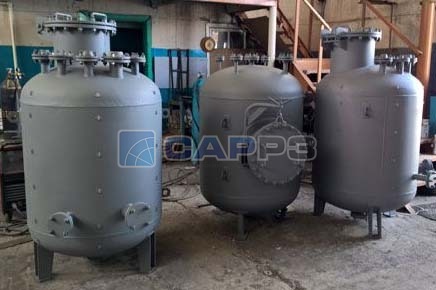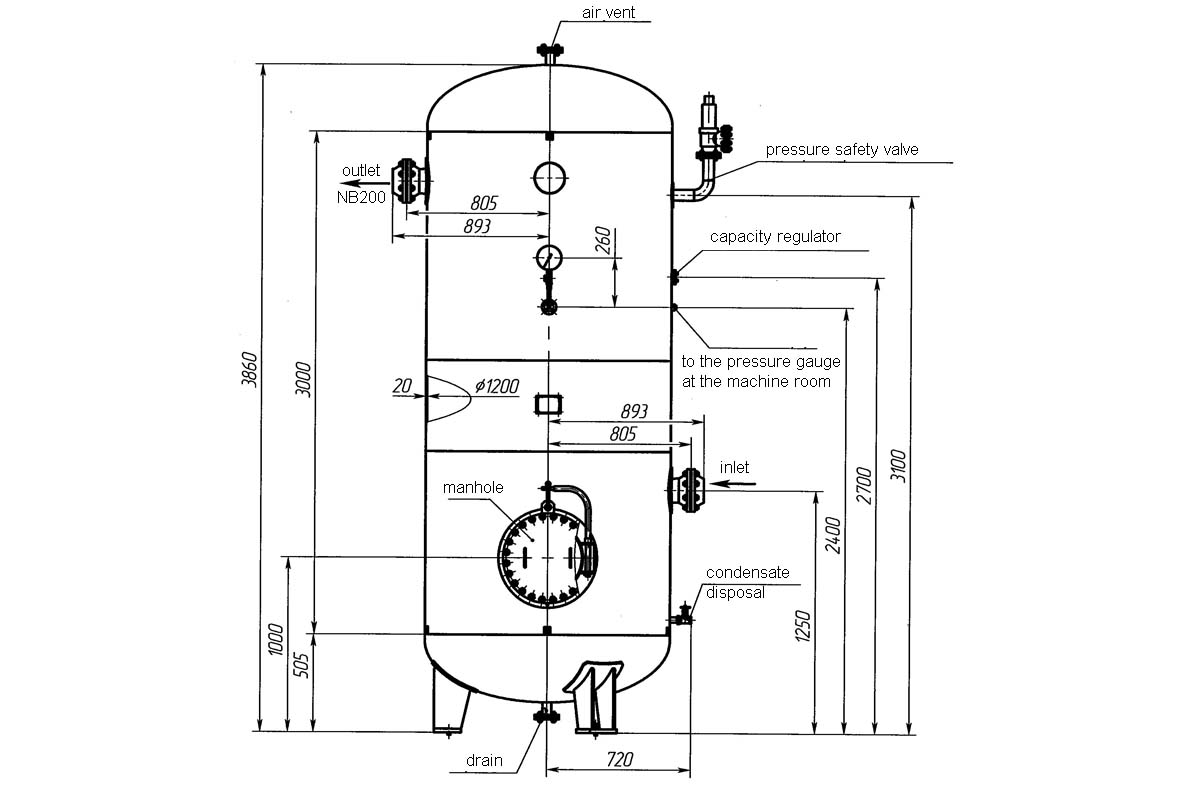Oxygen receiver
Description
The oxygen receivers (also oxygen tanks) are used to store oxygen in the liquid aggregate state at a pressure of up to 16.0 MPa. In addition, they are able to smooth flow ripples in the compressor lines and maintain a stable pressure regardless of the flow rate.
Oxygen receivers are used in various industries - oil and gas, chemical (for burning mechanism and synthesis), metallurgical (for stealing the steel, melting it), in the production of mineral fertilizers, and in production lines (for example, oxygen generators).
In complex process chains they can be connected in series or in parallel. In the first case, the capacity of each subsequent oxygen receiver decreases, but the quality of the final product is improved: the tank is used as a separator where moisture and oil are removed.
The properties of the operational product, the degree of aggression, predetermine the peculiarity of the vessels design and the choice of materials for their production.
Characteristics of oxygen receivers
The Saratov Reservoir Plant produces oxygen receivers with a volume of up to 200 m3 for operation at an ambient temperature of -60°C. The temperature range of the operational product is from -60°C to + 300°C.
Manufacture and construction of oxygen receivers
The Saratov Reservoir Plant has the necessary Certificates of Conformity.
We produce oxygen receivers from steel that is able to withstand the negative effects. For example, our experts apply high-strength low-alloyed, carbon and stainless steels with high strength properties and chemical inertness. The main grades are 09G2S, 12Х18N10Т, 10Х17N13М2Т. The material is selected depending on the environmental and operational conditions.
The coating of the inner surface must neutralize the effect of the gas. To make sure it does not react with the metal, special alloying additives and polymer coatings are used. This extends the service life, and also provides safe operation.
The oxygen tanks are a cylindrical shell with elliptical heads. The shell and heads are made on sheet bending machines, on which the shape of the metal blank is formed. Further, the heads are welded to the shell, in which service openings for hatches, branch pipes and fittings are pre-made.
Installation on the construction site is carried out on supports that are welded to the body.
The oxygen receiver can be horizontal or vertical, depending on the conditions on the site. Vertical placement has the advantage over horizontal: the first method saves space, while the functional characteristics do not change.
For quality assurance, leakage and pressure test is carried out. All information about the production process is contained in the Product certificate, which is included in the delivery.
Complete set
Reliable and safe operation is ensured by technological equipment:
- control and measuring instruments: pressure gauge, detectors, thermometer, regulator, etc.
- safety valve and shut-off devices
- fittings for gas supply and delivery
- condensate drain valve
- vent pipe
- hatch (s) for service maintenance and repair
The arrangement of fittings and pipes branch is selected individually and depends on the Customer's requirements.
Drawing of oxygen receiver with volume of 8 m3
(overall size, location and purpose of openings are for reference)
The summary table of technical characteristics you can see here.
Ordering an air vessel for oxygen at the Saratov Reservoir Plant
To calculate the cost of an oxygen receiver for storing oxygen, You can:
- call at +7(8452)250-288
- send the filled in Questionnaire at the e-mail
- press the "Request for quotation", button, provide contact details, and we will contact you
We provide comprehensive services for oil and gas facilities construction:
- carry out engineering surveys
- perform oil and gas facilities design
- produce tanks and vessel equipment
- assemble products of our own production
See also:
| Nitrogen receiver | Oxygen receiver | Compressed Air receivers |
| Argon receivers | Hydrogen receiver |

